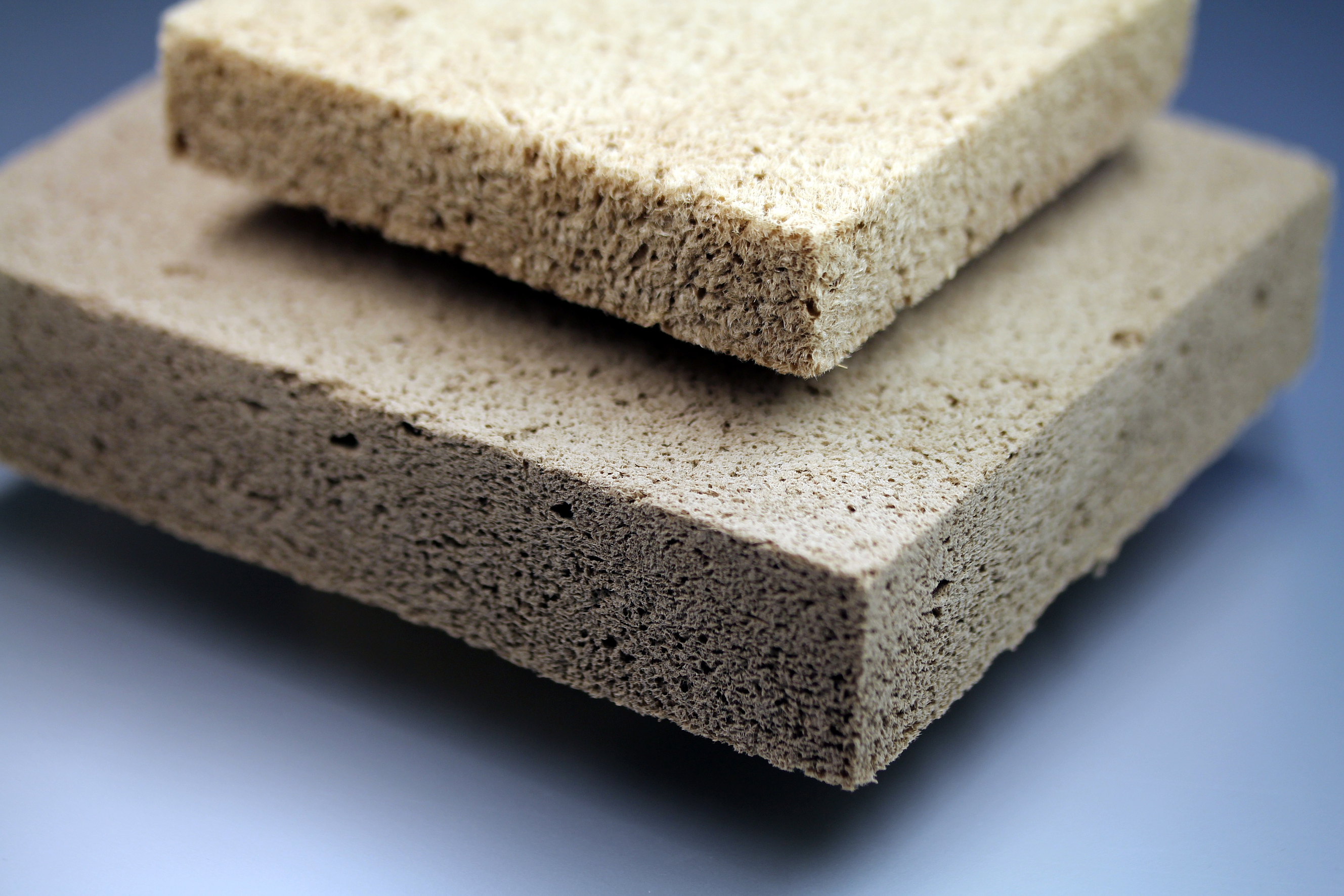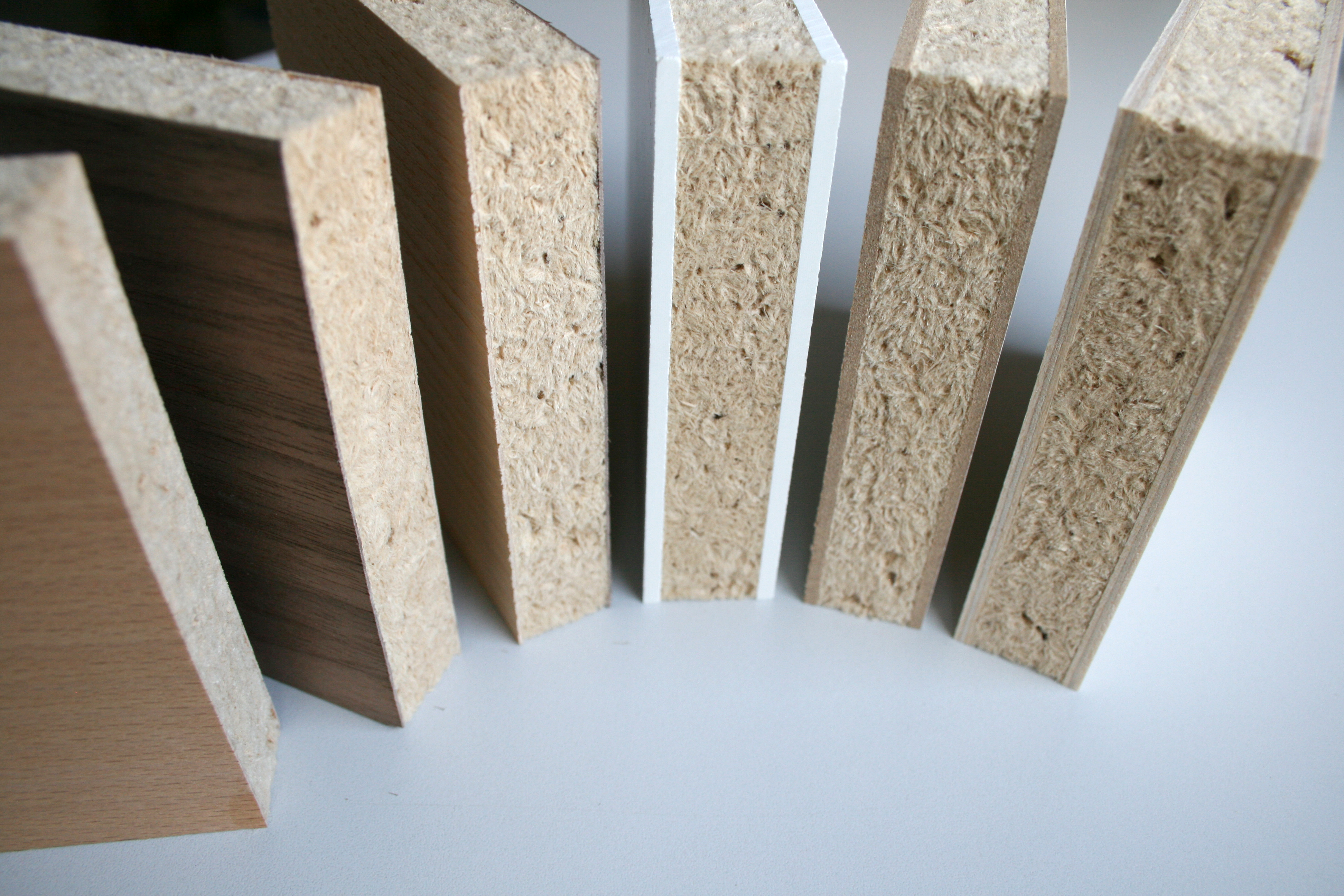In addition to the classically-bonded wood-based materials, we also develop innovative new materials. These include wood foams which consist 100 percent of wood, as they require no binders. Furthermore, we are also developing hybrid elements in which we use, for example, wood foams as the core material and combine these with surface layers made from differing materials. With our future-oriented new developments, we open up new application possibilities for renewable raw materials for diverse sectors. Lightweight materials with a high functionality are thereby created, which are economically extremely interesting.
New (hybrid) Materials
Research focus


Wood foam is a lightweight wood-based material (density 45 to 200 kg/m³) with an open-pore structure. The strength of the wood foam results from the wood’s own binding forces, so that the application of synthetic adhesives is not necessary and the foams therefore consist 100 percent of renewable raw materials. From an ecological and economic point of view, wood foams are ideally suitable for a variety of application fields, such as core material for lightweight or sandwich boards, as packaging material or as thermal and acoustic insulation. Wood foams can be easily recycled and, following their usage as packaging material, can be disposed of together with the waste paper.
Wood foam is, however, not only as a pure material highly interesting. As a core material for new hybrid materials, it opens up completely new possibilities for the application of wood-based materials, in particular for ecological lightweight applications. The wood foam can be combined with classic wood-based materials, metals, concrete, plastics or WPC as a surface layer, through which lightweight hybrid materials with a higher functionality are created. They can, for example, be applied in cars, as furniture boards or as façade elements.
In the construction sector, a great deal of effort is being put into the application of materials made from renewable raw resources. In order to compensate for certain disadvantages of wood-based materials, these are combined with other materials, such as concrete, to construct easily-processable prefabricated building elements. The application of innovative new cement-bonded particle boards, developed in our department, is also conceivable. Moreover, the weight and the thermal insulation play a major role. Wood foam is applied as a lightweight and thermally-insulating material. Varying systems are therefore being developed on sandwich panels.
In order to increase the proportion of wood in the automotive sector, we are developing, for example, hybrid moldings made from beech veneer and metal, which can be implemented as reinforcing components in car doors. Advantages of these moldings include the outstanding sustainability and the good damping properties. To reduce weight and to increase the proportion of renewable raw materials, we are also developing a hybrid material from metal and wood foam.
New (hybrid) materials on the basis of renewable raw resources are pioneering materials, as they combine the positive properties of differing materials. They are highly functional, economical and simultaneously help to reduce the ecological footprint.
 Fraunhofer Institute for Wood Research
Fraunhofer Institute for Wood Research